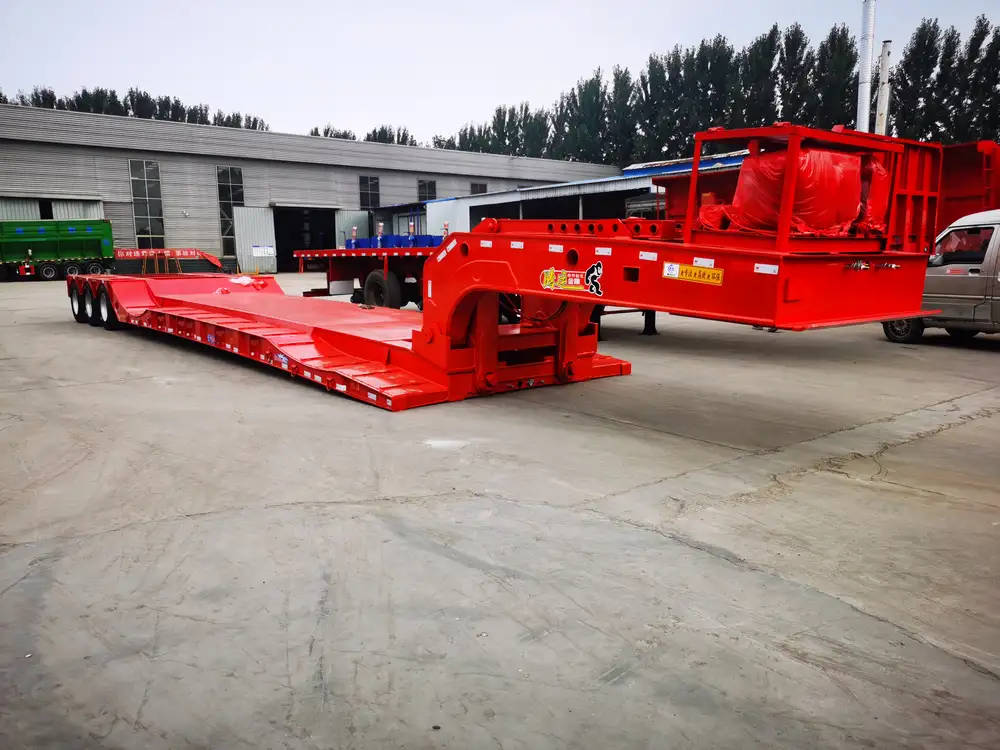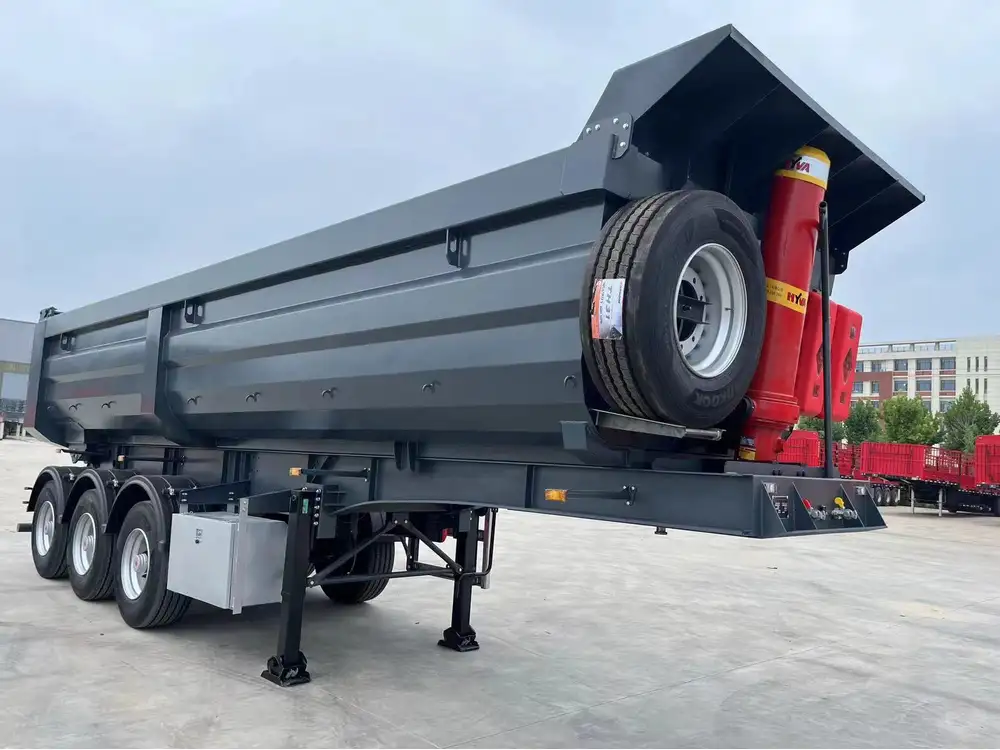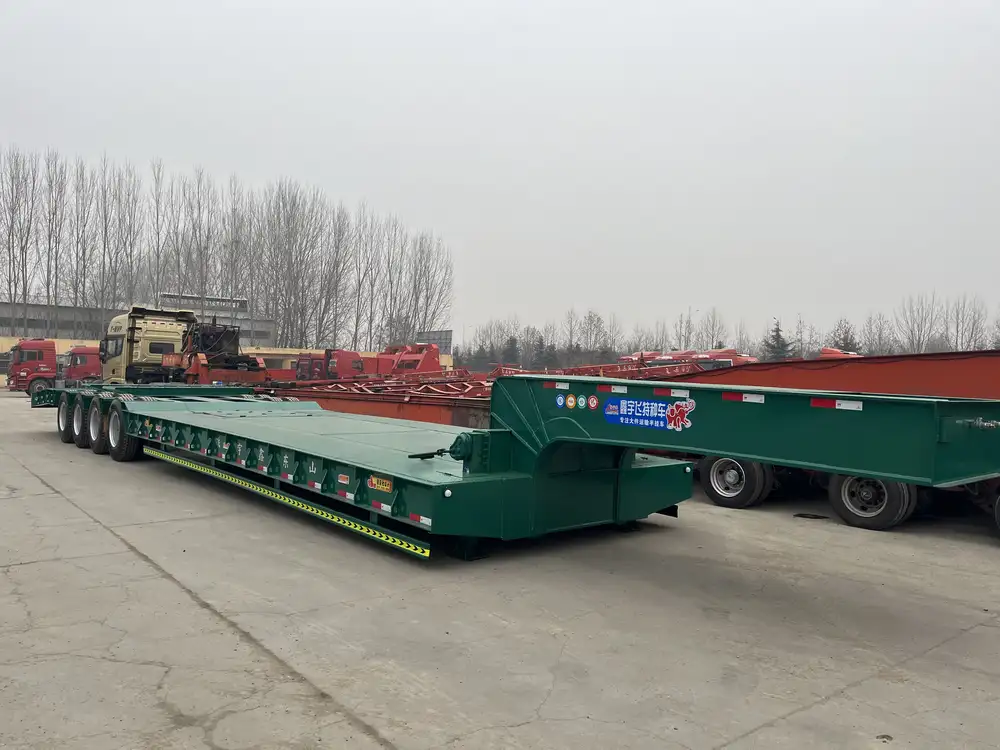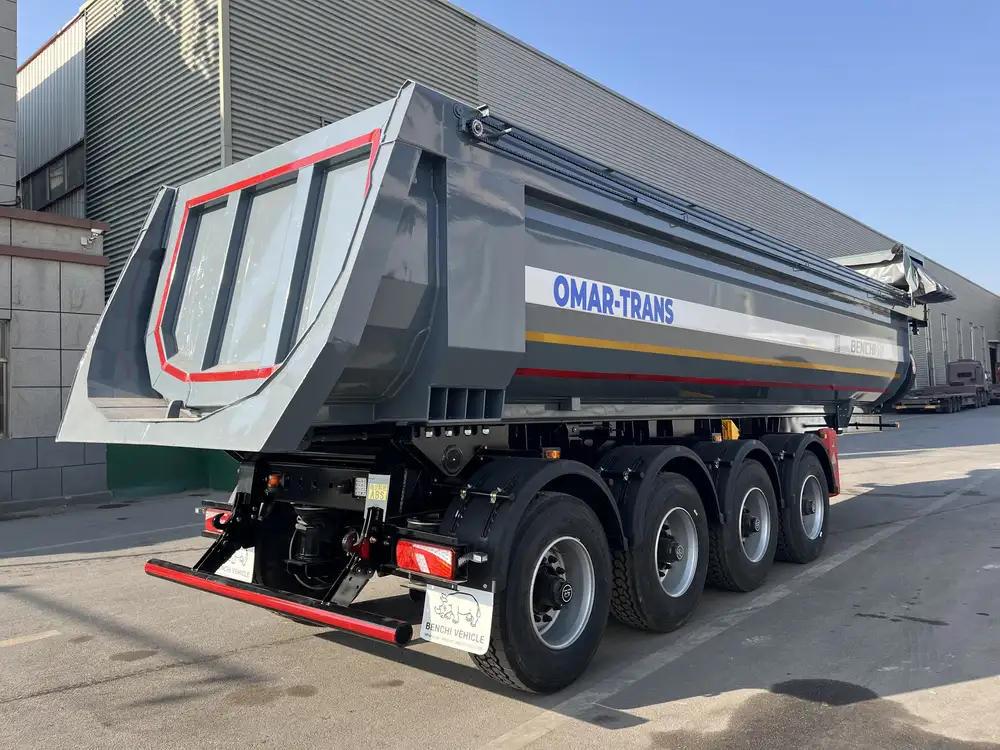When delving into the intricacies of the trucking industry, one question often arises: “What does the ’53 feet’ mean on a semi-trailer?” The significance of this measurement affects various aspects of logistics, transportation regulations, and freight optimization. In this comprehensive guide, we aim to unravel the meaning and ramifications of the 53-foot measurement, providing you with essential insights that could drive efficiency in your operations.
Table of Contents
- Overview of Semi-Trailer Sizes
- The Importance of the 53-Foot Length
- 2.1. Regulatory Compliance
- 2.2. Cargo Capacity
- Comparative Analysis: 53-Foot vs. Other Semi-Trailer Sizes
- 3.1. 48-Foot Semi-Trailers
- 3.2. 40-Foot Semi-Trailers
- 3.3. Custom Length Trailers
- Impact on Logistics and Transportation
- 4.1. Route Planning
- 4.2. Loading and Unloading Dynamics
- Production and Design Considerations
- Future Trends in Trailer Sizes
- Conclusion
1. Overview of Semi-Trailer Sizes
Semi-trailers play a pivotal role in the transportation of goods across vast distances. The length of these trailers varies, but within the United States, the 53-foot semi-trailer has become the industry standard. This standardization allows for efficient logistics management, optimizing space usage in conjunction with tractor units.

Semi-Trailer Types
- Flatbed Trailers
- Refrigerated Trailers (Reefers)
- Dry Van Trailers
- Specialized Trailers
2. The Importance of the 53-Foot Length
2.1. Regulatory Compliance
One of the major reasons for the prevalence of 53-foot semi-trailers is compliance with federal regulations. Under the Surface Transportation Assistance Act (STAA) of 1982, 53-foot trailers are legal for interstate transport, which offers significant advantages in terms of route flexibility and access to more destinations. The regulations governing trailer lengths vary from state to state, but federally, 53 feet is the ceiling for most trailers.

2.2. Cargo Capacity
A semi-trailer’s length is intrinsically linked to its cargo capacity. A 53-foot trailer typically offers a maximum payload capacity of about 45,000 pounds, assuming it is a standard dry van configuration. This means businesses can transport more goods per trip, which is crucial for maximizing revenue.
Utilizing a 53-foot semi-trailer compared to smaller options like 48-foot trailers enables companies to:
- Reduce Transportation Costs: More cargo per trip translates to fewer trips and lower fuel expenses.
- Increase Efficiency: More room allows for better management of freight, especially when shipping larger or bulkier items.
3. Comparative Analysis: 53-Foot vs. Other Semi-Trailer Sizes
While the 53-foot semi-trailer is optimal for numerous freight applications, comparing it with other common trailer sizes will provide deeper insights into its advantage.
3.1. 48-Foot Semi-Trailers
The 48-foot trailer is another popular choice within the industry, especially for those who do not require the full length of a 53-foot trailer. The main distinctions include:
- Payload Capacity: Generally lower than 53-foot trailers; can lead to reduced efficiency in load distribution.
- Cost Efficiency: Lower initial costs but potentially higher costs in the long run due to more trips.

3.2. 40-Foot Semi-Trailers
As we dive further down the scale, 40-foot semi-trailers are mostly used for specific regional or lighter deliveries. They are not as efficient for long-haul operations but are useful for confined urban areas.
- Ideal for Congested Areas: Their smaller size allows for easier maneuverability.
- Limited Cargo Capacity: Significantly less than larger trailers, which might necessitate multiple shipments.
3.3. Custom Length Trailers
Custom trailers can be designed to meet specific requirements, whether for oversized loads or specialized freight. However, they often come with challenges regarding regulatory compliance and logistics planning.
| Trailer Size | Typical Length | Max Cargo Capacity | Common Uses |
|---|---|---|---|
| 53-Foot | 53 feet | ~45,000 lbs | Long-haul freight, standard shipments |
| 48-Foot | 48 feet | ~42,000 lbs | Regional transport, slightly limited loads |
| 40-Foot | 40 feet | ~35,000 lbs | Urban deliveries, specialized moves |
4. Impact on Logistics and Transportation
Understanding the 53-foot measurement goes beyond just its physical presence on the road; it permeates logistics, route planning, and even the economics of transportation.

4.1. Route Planning
Having standardized trailer lengths enhances route planning for logistics companies. With 53-foot trailers, planners can easily calculate:
- Turn Radius: Knowing how a 53-foot trailer will handle certain corners aids in selecting proper routes.
- Parking Requirements: Facilities need to be equipped to handle longer trailers, influencing dock design and logistics centers.
4.2. Loading and Unloading Dynamics
Loading and unloading strategies must accommodate the specific dimensions and weight distributions of a 53-foot trailer:
- Efficiency in Handling: More space may allow for better layout and stacking of cargo, facilitating faster loading and unloading times.
- Safety Considerations: Proper loading techniques are crucial to prevent accidents caused by shifting cargo during transit.
5. Production and Design Considerations
The design of a 53-foot semi-trailer involves various engineering and manufacturing considerations. Attention to materials, structural integrity, and weight distribution plays a critical role in ensuring the trailer adheres to safety regulations while maximizing payload.
- Material Choices: Use of lightweight, durable materials can enhance the efficiency of the trailer.
- Aerodynamics: Improved designs can lead to better fuel efficiency, reducing operating costs substantially.

6. Future Trends in Trailer Sizes
Looking ahead, the semi-trailer industry is witnessing several evolving trends that could impact trailer length standardizations:
- Shift Toward Electrification: As electric trucks gain traction, trailer designs may adapt to optimize weight and energy efficiency.
- Increased Customization: Customers are increasingly seeking trailers that fit specific needs, which could affect standardization.
In addition, recent regulations may influence length stipulations, with some states beginning to explore new maximum length allowances. It’s essential for manufacturers to stay attuned to these developments to ensure compliance while also meeting client needs.
7. Conclusion
In conclusion, understanding the measurement of 53 feet in a semi-trailer provides invaluable insights into its operational validity and relevance within the logistics industry. From regulatory compliance to enhanced cargo capacity, the advantages of a 53-foot trailer are evident across various dimensions of transportation.
As we move forward in a rapidly evolving transport landscape, it is crucial for industry players to embrace these standards, optimizing their operations for heightened efficiency and effectiveness. Whether you’re a logistics manager, a manufacturer, or a hauler, recognizing the strategic significance of the 53-foot semi-trailer will ultimately contribute to your success in navigating the complexities of freight transport.



